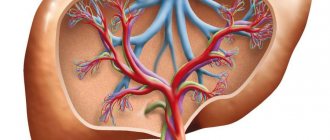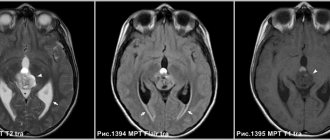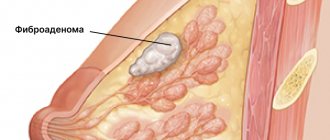Primary appointment/consultation with a gynecologist—RUB 1,700. Repeated appointment/consultation with a gynecologist—RUB 1,200. See all prices
+7 (499) 400-47-33
Bartholinitis (Bartholin gland abscess, Bartholin gland cyst) is a disease in which the Bartholin glands become inflamed. These glands are located on both sides of the vagina in the area of the labia minora (in the vestibule of the vagina). Their main function is to maintain moisture at the vaginal opening during sexual intercourse. The excretory ducts of the glands open onto the surface of the labia minora. When the ducts are infected (with sexually transmitted infections - gonorrhea, trichomoniasis and chlamydia, less often - gonococci, streptococci, staphylococci, E. coli and other microorganisms), inflammation occurs, which can subsequently spread to the entire gland and surrounding tissues. In most cases, only one gland becomes inflamed, i.e. the inflammatory process is one-sided.
The reasons for the development of bartholinitis are infection through the excretory ducts of the Bartholin glands. This is facilitated by:
- Insufficient genital hygiene;
- Unprotected sexual intercourse;
- Sexual intercourse during menstruation;
- The presence of diseases such as colpitis, urethritis, the presence of sexually transmitted diseases;
- Decreased immunity.
Definition of disease. Causes of the disease
A Bartholin gland cyst is a benign round cavity (a saccular formation with thin walls and the presence of secretions of varying consistency inside) formation in the lower third of the vestibule of the vagina as a result of a violation of the outflow of secretions from the cavity and its accumulation in it.
The cyst cavity stretched by secretions can have different sizes, reaching 7-9 cm in diameter. Bartholin gland cysts are observed mainly before the age of 30 years (hormonally active reproductive age) and account for 2% of all diseases of the female genital organs with actively functioning and hormonally dependent Bartholin glands.
Before we move on to the mechanism of development of this pathology, we will consider the normal anatomy and physiology of the Bartholin glands.
Bartholin's glands or large vestibular glands are located on both sides of the vestibule of the vagina, in its lower third in the thickness of the labia majora. They are a paired organ. They got their name in honor of the Danish anatomist Caspar Bartolin Jr. who discovered them. Their size is about 1.5-2 cm, the excretory duct of the Bartholin gland, 1.5-2.5 cm long, opens on the inner surface of the labia minora at the border of its middle and posterior third. In some cases, their atypical location occurs, for example, in the thickness of the labia minora [13]
The function of the Bartholin glands is to moisturize the mucous membrane of the vulva during arousal during sexual intercourse, which prevents it from becoming dry and painful during sexual intercourse. Due to the presence of mucin in the secretion, it has a bactericidal effect.
The main causes of this disease are frequent inflammatory processes in the genital area caused by specific and nonspecific microflora, such as staphylococci, streptococci, E. coli, and pathogens of sexually transmitted infections - gonococci, chlamydia, etc. Microorganisms that cause diseases are increasingly being isolated upper respiratory tract - streptococcus pneumoniae and influenza bacilli [2]
Ruptures of the soft tissues of the perineum during childbirth and trauma, surgical manipulations on the external genitalia (episiotomy - incision of the soft tissues of the genital slit during childbirth to prevent their rupture in an unfavorable place, followed by the application of raffia sutures, surgical perineoplasty - surgical plastic surgery of the soft tissues of the perineum, surgical labiaplasty - surgical plastic surgery of the labia in the form of reducing their size).
More often, in cultures of Bartholin gland cyst secretions, no growth of diagnostically significant flora is detected. The causative agents for inflammation of the Bartholin gland cyst and transition to an abscess (above we discussed the microflora leading to the causes of inflammation leading to the appearance of a cyst) can also be representatives of the normal microflora of the female genital organs, such as staphylococci, streptococci, E. coli, and pathogens sexually transmitted diseases - gonococci, chlamydia, etc. Microorganisms that cause diseases of the upper respiratory tract - streptococci pneumonia and influenza bacilli - are increasingly being isolated [2]
Often cysts can be preceded by acute bartholinitis - an inflammatory process of the Bartholin gland without blockage of the duct (cysts in this case develop both after treatment after some time, and in the absence of it.
Operation of opening abscess of Bartholin's gland
Opening an abscess with bartholinitis is carried out as follows:
- The patient is located in a gynecological chair.
- The doctor performs a procedure for disinfecting the vulva and also administers an anesthetic.
- From the side of the mucous membrane, the doctor makes an incision, empties the contents of the abscess and sanitizes the cavity.
- A drainage tube is installed into the incision to drain the exudate.
According to indications, the doctor can create a new opening for the gland duct or perform its complete removal.
After completion of the operation, it is necessary to sanitize the gland cavity every day. For this purpose, antibacterial agents are used for external use.
Symptoms
Bartholin gland cysts are common problems in women of reproductive age. Most often, women complain about aesthetic issues - asymmetry of the labia, swelling on one side of the labia majora. Cysts are usually asymptomatic and can be detected by a gynecologist during a routine examination. But in some cases (hypothermia, acute or subacute inflammatory process of the respiratory tract, acute or subacute inflammatory diseases of the genital tract, pelvic organs), they can increase and cause significant pain. Women with larger cysts may complain of discomfort when walking, sitting, and during sexual intercourse. If the Bartholin gland is functioning on the other side, the hydration of the vagina does not change during sexual intercourse. Due to blockage and the presence of a cyst, the Bartholin gland cannot fully function.[2] .[1]
Prevention
To prevent bartholinitis you need:
- Get tested regularly for STDs and, if infections are detected, treat them immediately;
- Avoid wearing thick synthetic underwear, especially in hot weather;
- Avoid hypothermia of the lower half of the body;
- Do not use aggressive soaps or antibacterial agents (unless prescribed by a doctor). These drugs disrupt the natural balance of microflora, contributing to the occurrence of dysbiosis (development of pathogenic flora) and candidiasis - a fungal infection;
- Use pH-neutral intimate hygiene products.
Bartholinitis is easy to prevent; if you follow preventive measures, the risk of the disease is greatly reduced.
Pathogenesis
The resulting inflammation of surrounding tissues occurs in 3 stages:
Stage 1 - Alteration the release of fluid during Stage 2 - Exudation and blood cells from the vessels into the tissue, edema occurs.
Stage 3 - Proliferation (or productive stage) does not occur, since damaging factors continue to operate and therefore the resulting swelling, thickening of the walls, narrowing of the lumen of the canal, thickening of the secretion, resulting in blockage of the duct), the secretion of the Bartholin gland being produced, accumulating, thickening, leads to the formation of a cystic cavity formation, gradually increasing in size. Local defenses fail due to concomitant diseases, decreased general immunity and the aggressiveness of the flora that causes inflammation. Reaching a size of 4 or more centimeters, squeezing the surrounding tissues, causes pain in a woman and can, turning into an inflammatory process, cause an abscess of the Bartholin gland [2] [3] [4]
The causes and mechanism of development of Bartholin’s gland abscess are described below in the “Complication” section.
Complications
1) Chronic bartholinitis - chronic inflammation of the vestibular gland for more than 3 months.
In this case, a formation in the area of the labia majora, accompanied by pain on palpation of the affected gland, redness, swelling of the tissues, can be both a complication and the primary cause of a Bartholin gland cyst. Treatment is aimed at destroying the causative agent of the disease and relieving symptoms of intoxication.
2) Bartholin gland abscess [1]
Under unfavorable conditions (secondary infection (migration of bacteria from nearby areas (genital tract, cervical canal, uterine cavity, urinary system or separate foci - oropharynx, respiratory tract), weakened immunity) the cyst suppurates with the development of a Bartholin gland abscess.
Body temperature, intoxication, and a sharp deterioration in health appear. Locally, there is an increase in the size of the formation from 10 to 12 cm, a feeling of fullness and sharp throbbing pain in the perineum. Any movement can increase the pain.
On palpation - fluctuation, increased skin temperature.
An abscess of the Bartholin gland can open spontaneously, releasing pus. Since abscess formation of a Bartholin gland cyst is often associated with sexually transmitted infections, there may be clinical symptoms of colpitis, urethritis, endocervicitis, the main symptoms of which are swelling and hyperemia of the mucous membrane, itching, leucorrhoea
The method of treatment is planned or emergency hospitalization, during which an autopsy is performed followed by drainage of the abscess, anti-inflammatory (broad-spectrum antibiotics), detoxification therapy.
3) Cyst recurrence occurs quite often in situations such as self-opening, surgical opening or puncture of the cyst.
1. Rectovaginal fistula as a complication of excision of the Bartholin gland. This is a pathological channel between the rectum and vagina as a result of ongoing inflammation and melting of surrounding tissues.
A rectovaginal fistula may occur after removal of the Bartholin gland. Case [12] illustrates a rare and serious complication of a commonly performed gynecological procedure
Patients may complain of pain in the perineal area, pain during sexual intercourse, or bowel movements. To establish and confirm the diagnosis, after collecting an anamnesis, conducting a gynecological and rectovaginal examination, additional examinations, and consulting a proctologist. The tissue defect is eliminated using an autograft, a biological collagen plug, or a titanium clip. If a fistula is detected during pregnancy, natural childbirth is prohibited. With adequate treatment, the prognosis is favorable.
2. Sepsis is a systemic inflammatory reaction in response to a local inflammatory process in the area of the Bartholin gland cyst. The response to the release of toxins formed during the destruction of harmful microorganisms in the absence of appropriate therapy is accompanied by a failure syndrome in many organs and systems, which can lead to death.
Diagnostics
The diagnosis of a Bartholin gland cyst (including asymptomatic cases) is often made on the basis of an objective examination: asymmetry of the genital fissure, an increase in the volume of one or, less often, two labia majora. If the Bartholin gland cyst is not inflamed, the skin over it retains its normal color. Upon palpation, the gynecologist detects a slightly painful cystic formation of elastic consistency in the thickness of the labia majora.
Laboratory tests: not specific [3] (in blood and urine tests, if the cyst is uncomplicated by inflammation, there will be no changes
Instrumental studies: ultrasound of the external genital area reveals an anechoic or hypoechoic avascular (not reflecting or poorly reflecting ultrasound, on the screen we see a round formation with thin - light walls and completely dark or light suspended contents) formation with thin walls
List of main diagnostic measures at the outpatient stage:
1. General blood test;
2. General urine analysis;
These blood and urine tests are taken as part of the standard, to prepare for surgical treatment and to exclude concomitant pathologies from other organs with their subsequent correction)
3. Smear for microflora and degree of purity.
This is an examination method in which the test material is taken from the surface of the mucous membrane of the vagina, cervical canal and urethra. The purpose of the analysis is to assess the composition of the microflora and identify inflammatory diseases. The assessment of the standing of the natural flora has in its classification four degrees of vaginal cleanliness:
1st degree – epithelial cells and a normal number of lactobacilli in the smear, pH – acidic;
Grade 2 – a small number of leukocytes, fewer lactobacilli, gram-positive diplococci are present. pH – remains acidic;
3rd degree - increased number of epithelial cells and leukocytes, decreased lactobacilli, many coccal bacteria, pH - slightly acidic or alkaline;
4th degree – a large number of epithelium and leukocytes, pyogenic microorganisms, absence of lactobacilli, pH – alkaline.
4. Bacterioscopic examination of vaginal discharge and cyst contents - allows us to identify microbial agents that caused the Bartholin gland cyst: identification of the pathogen, sensitivity to antibiotics.
5. Testing for infections (ELISA, PCR) gonorrhea, trichomoniasis, chlamydia. [3]
The required scope of examinations before hospitalization:
1. Blood for antibodies to Treponema pallidum (this is the detection of total antibodies to the causative agent of syphilis) - a necessary test before hospitalization and surgery!!
2. Blood type and Rh factor.
3. General blood test.
4. General urine analysis.
5. Smear to determine the degree of purity.
6. Culture from the cervical canal.
7. HbsAg - surface antigen of the hepatitis B virus - to detect hepatitis B by its presence and determine its concentration, a necessary analysis before hospitalization and surgery!!
8. Anti HCV.
In women during menopause or perimenopause, an excisional biopsy is indicated to exclude adenocarcinoma, since at this age the risk of developing malignant tumors is greatest
Differential diagnosis
Includes cystic and solid lesions of the vulva, such as epidermal inclusion cyst, hidradenoma papilliferum and lipoma [3], vulvar neoplasms; - abscess of the Bartholin gland; - bartholinitis; vulvar abscess.
— Hematoma in the vulva area – there may also be complaints about a formation in the vulva area, discomfort during sexual intercourse, and pain. But when collecting anamnesis; and gynecological examination - the woman associates its appearance with mechanical trauma, childbirth; And the location is not in the area of projection of the large vestibular gland. [1]
— Paraurethral cysts – similar complaints. On examination - swelling in the paraurethral region (the area near the urethra) [1]
- Furunculosis of the labia majora. Complaints include formations in the perineal area, general malaise, hyperemia, edema, hyperthermia. Upon examination, the formation is localized in the area of the hair follicle and sebaceous gland. [1]
Treatment
Small, asymptomatic cysts may not be treated except for cosmetic purposes.
Often the clinician is tempted to simply incise the cyst or abscess because this technique may be effective for other common abscesses. However, simply puncturing a cyst or abscess of the Bartholin gland can lead to a relapse, since the edges of the tissues, when punctured or cut, very quickly close again due to the rapid healing or regeneration process [6]
Only large cysts, usually 3 or more centimeters, which interfere with daily activity and sexual life, and disrupt the aesthetic appearance of a woman’s external genitalia, are subject to surgical treatment.
The main goal of surgical treatment is organ-preserving - the formation of a canal and restoration of the function of the Bartholin gland,
Bartholinitis and pregnancy
Infections that a woman is infected with and that cause bartholinitis can negatively affect the course of pregnancy and the development of the child. Infected mother's blood, entering the child's body through the placenta, can lead to disturbances in the formation of the baby's organs. In the early stages of pregnancy, infection can cause fetal death.
Do not delay visiting your doctor if you have symptoms of inflammation of the Bartholin gland. You can diagnose bartholinitis in our clinic, and also receive qualified help, advice and recommendations by making an appointment with a gynecologist by phone. or the feedback form at the bottom of the page.
Watch yourself, appreciate yourself and be healthy!
Catheter placement – Word
This is a modern method of surgical treatment for Bartholin’s gland cyst, especially in case of its recurrence.
Under local anesthesia, the cystic area is opened with a small incision of about 5 mm, the contents are removed and sent for bacteriological examination, the cyst cavity is washed and a Word catheter is installed in it (this is a silicone tube 55 mm long, 5 mm in diameter with a channel inside, blindly ending, with thinner walls at the end, due to which the tip can inflate into a ball, which has no analogues), inflating its rubber tip to 3 ml with a physiological solution of 0.9% sodium chloride, thereby fixing it in the cavity of the cyst. For better fixation and prevention of loss during the woman’s movements, it is recommended to apply 2-3 absorbable interrupted sutures along the contour of the catheter emerging from the cavity of the cyst. The second end of the catheter is inserted into the vagina. The catheter remains in the cyst cavity for 6 weeks. This is aimed at forming a channel for the passage of secretions, the walls of which do not grow together. The study shows that the Word catheter is an easy-to-use, low-cost outpatient procedure with acceptable short-term recurrences. Treatment costs are seven times lower than with marsupialization [7]. While the catheter is in the cyst cavity, the patient is advised to have sexual rest to avoid its loss. In a number of countries there is no such restriction, since studies have shown that the pain symptom caused by both the cyst itself and the procedure performed with the catheter in the cavity completely disappears over time (by day 6) [8]
As an alternative, a Voroda or a Jacobi ring (the catheter does not have a channel, it is harder, shaped like a ring) which is installed through 2 punctures in the mucous membrane and capsule of the cyst and the 2 ends are fastened to each other.
Recommendations after the procedure
To speed up tissue healing, the following recommendations must be followed:
- take an intimate shower at least 2 times a day, using a hygiene product with a neutral ph;
- stop using panty liners;
- refuse to visit the bathhouse, sauna, beach, solarium;
- wear comfortable underwear made from natural fabrics;
- maintain sexual peace.
If the doctor has prescribed antibiotics, they should be taken strictly following the regimen prescribed by the doctor.







